
Dabur Amla - A failed campaign
We redesigned a failed campaign by dabur amla
Strong presence in rural India, Also consumed by urban middle-class women, but the majority of sales come from the rural segment. The brand has an extensive distribution network. Increased competition from brands like Parachute (Marico), Bajaj Almond Drops, and new Ayurvedic hair oils. Younger consumers prefer non-sticky serums and hair sprays over traditional oils
84 year-old brand, Part of Dabur India Ltd, one of the largest FMCG companies specializing in healthcare products
About Dabur Amla
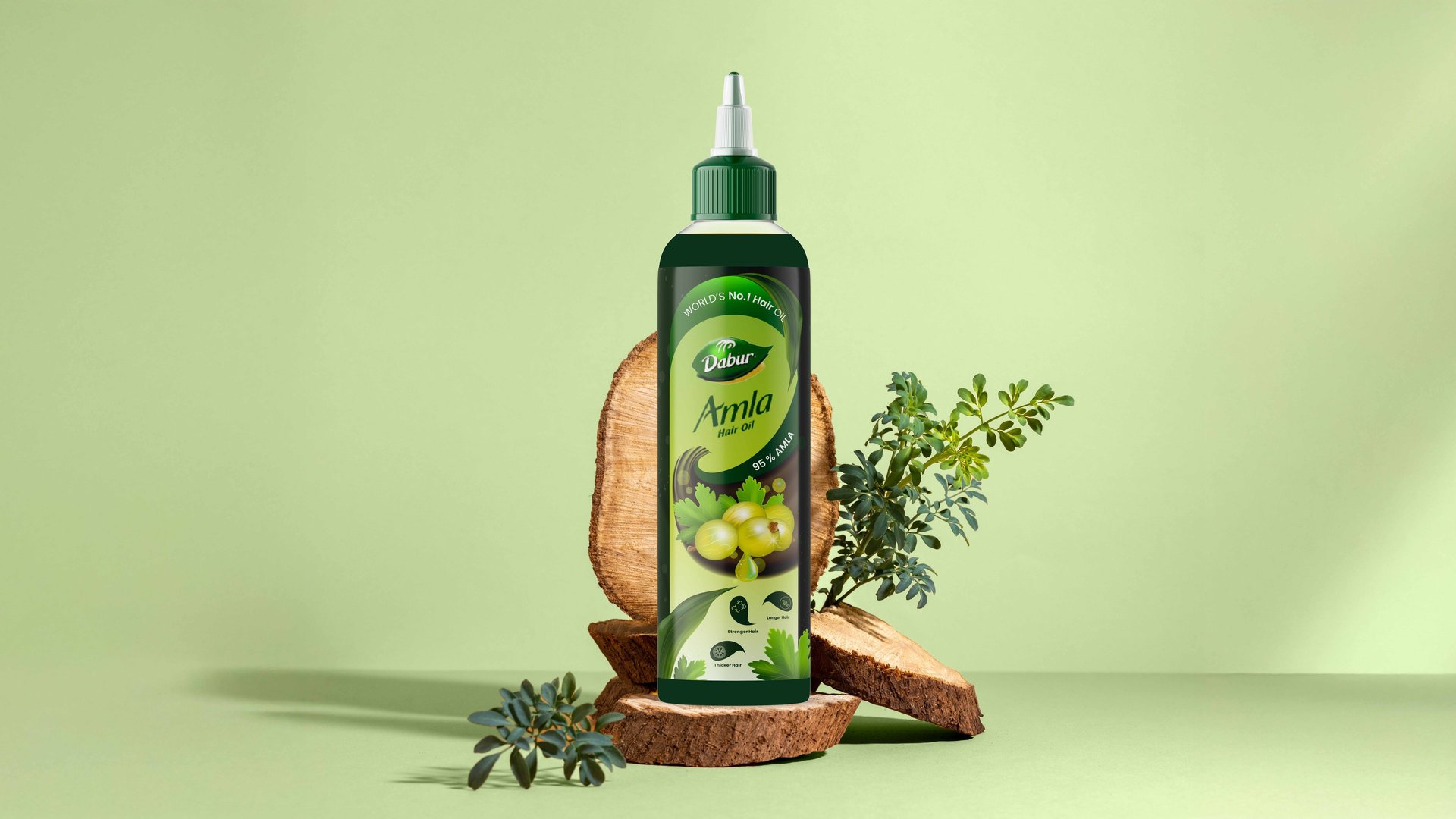
Dabur Amla launched a series of comparative advertisements targeting competitor Nihar Shanti Amla. Despite Dabur's established market position andhigher brand equity, these campaigns failed toeffectively counter Nihar's value proposition, and insome cases, may have inadvertently strengthened their competitor's position. We refixed their communication
About the project
NEGATIVE COMPARATIVE APPROACH
Warning against "cheap" alternatives. Implying inferior quality of competitor. Using fear of hair damage as motivator.
DIRECT PRICE CONFRONTATION
Acknowledging price difference. Attempting to justify premium pricing. Highlighting quantity differences.
Dabur’s Response
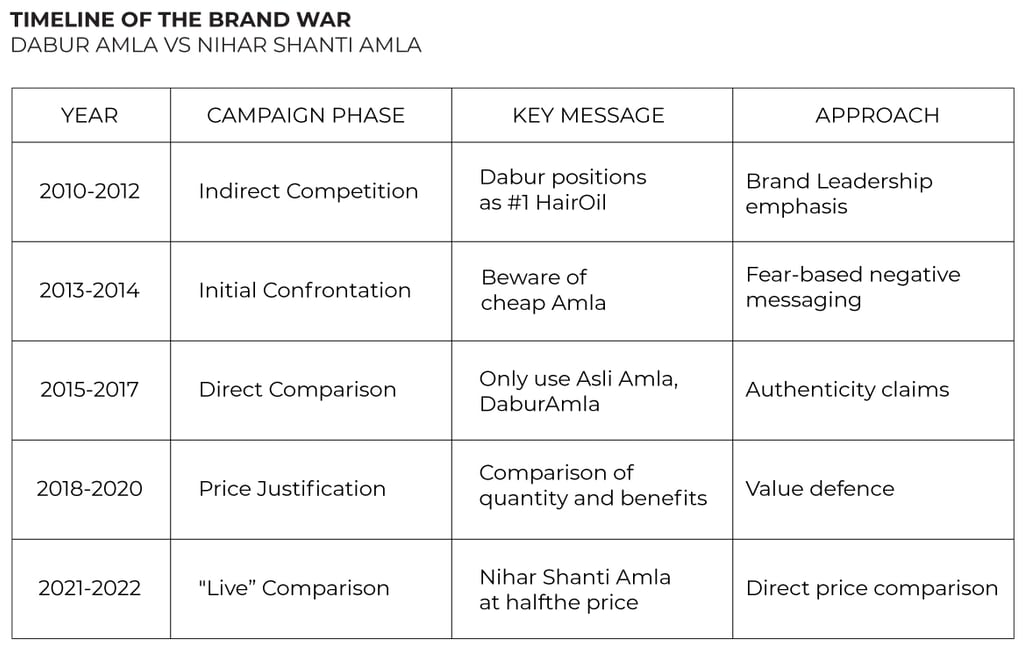

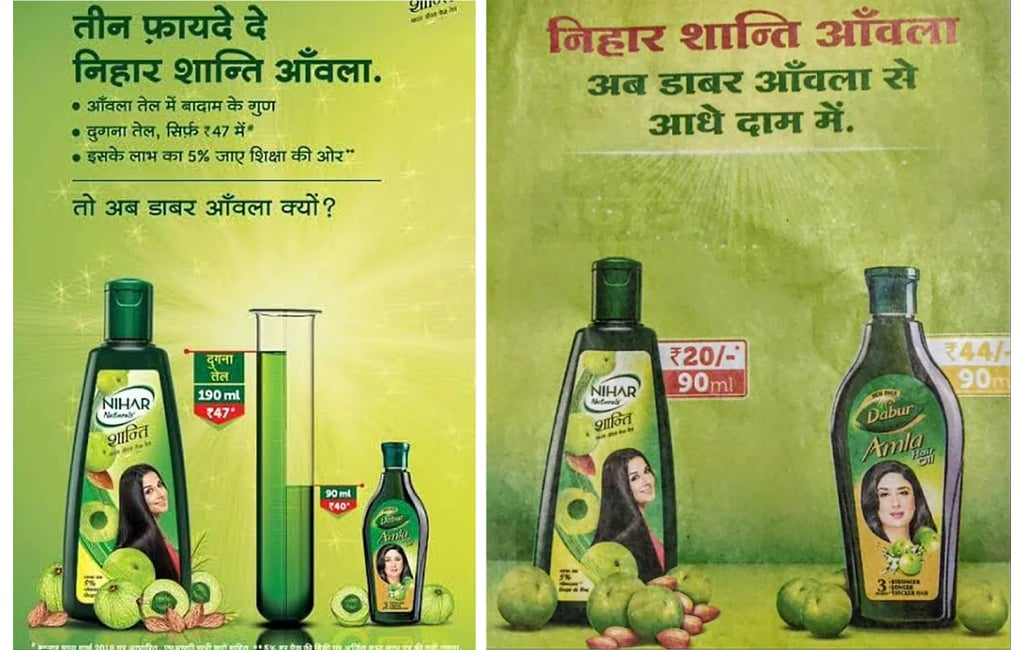

AUTHENTICITY POSITIONING
Emphasizing "Asli" (real/authentic) Amla.
Referencing 115 years of Ayurvedic expertise.
Positioning as the original, trusted product.
HIGH-GROUND MARKET LEADER STANCE
"World's No. 1 Hair Oil" claims.
Trusted by millions of women.
Legacy brand positioning.
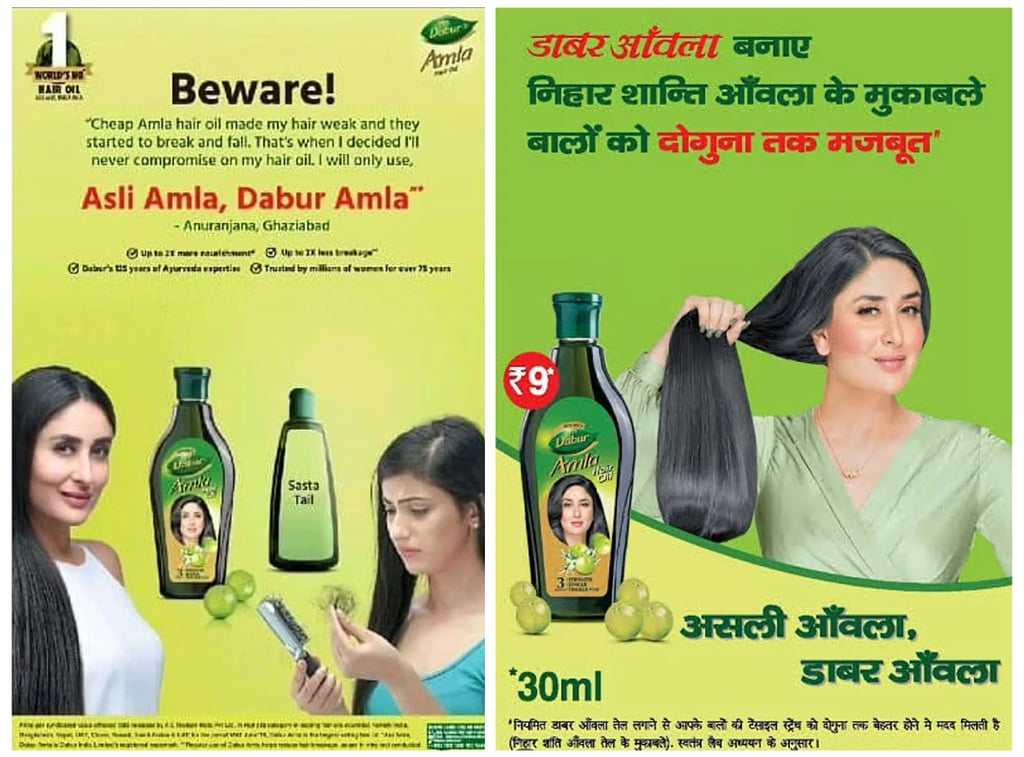

Highlighted Competitor's Strength
What They Did: Directly compared prices showing Dabur at ₹90 vs. Nihar at ₹47
Why It Failed: Reinforced Nihar's core value proposition (similar product at half price)
Better Approach: Focus on unique benefits rather than price comparison
Created Consumer Psychological Reactance
What They Did: Directly attacked consumer choice with negative framing
Why It Failed: Triggered defensiveness in Nihar users
Better Approach: Position as a premium choice without denigrating alternatives
WHY IT WAS INEFFECTIVE
Used Fear Without Clear Solution
What They Did: "Beware!" messaging claiming hair breakage from "cheapAmla"
Why It Failed: Fear appeals only work when paired with convincing solutions
Better Approach: Demonstrate superior performance through positive testimonials
Provided Free Visibility to Competitor
What They Did: Featured Nihar product in advertisements alongside Dabur
Why It Failed: Increased brand recognition for smaller competitor
Better Approach: Market leader should focus on own strengths, ignore smaller competitors
THE PSYCHOLOGICAL FLAWS
1) FEAR-BASED MESSAGING WITHOUT SOLUTION CLARITY:
Example: "Beware!" headline with testimonial claiming "Cheap Amla hair oil made my hair weak"
Flaw: Fear appeals only work when paired with clear, convincing solutions
Impact: Consumers left unconvinced about how Dabur actually prevents the claimed problems
2) PSYCHOLOGICAL REACTANCE TRIGGER
Example: Direct attack calling competitor products "Sasta Tel" (cheap oil)
Flaw: People resist when they feel their choices are being criticized
Impact: Created sympathy for Nihar, especially among its existing customers
3) FALSE CONSENSUS EFFECT
Example: Assuming consumers equate higher price with superior quality
Flaw: Overestimating how many consumers share this quality perception
Impact: Missed connecting with value-conscious Indian consumers
4) INADVERTENT SOCIAL PROOF
Example: Repeatedly showing and mentioning Nihar alongside Dabur
Flaw: Acknowledging competitor legitimizes it as a viable alternative
Impact: Increased Nihar's brand recognition and position as a genuine competitor
5) COGNITIVE DISSONANCE BACKFIRE
Example: Suggesting Nihar users are making a poor choice
Flaw: When faced with dissonance, consumers often reject new information
Impact: Existing Nihar users likely became more committed to their choice
6) FUNDAMENTAL ATTRIBUTION ERROR
Example: Claiming hair problems are caused by "cheap" amla oil
Flaw: Ignoring multiple factors affecting hair health beyond product choice
Impact: Consumers found claim inconsistent with their personal experience
7) PRICE-QUALITY HEURISTIC OVERRELIANCE
Example: Emphasis on being "#1" and original without substantiating quality difference
Flaw: Failed to provide convincing evidence for 2x price premium
Impact: Highlighted price disadvantage without justifying the value difference
8) STATUS ANXIETY MISCALCULATION
Example: Implying using premium product shows better judgment
Flaw: Many consumers take pride in making smart financial decisions
Impact: Alienated those who view value-seeking as intelligent consumer behavior
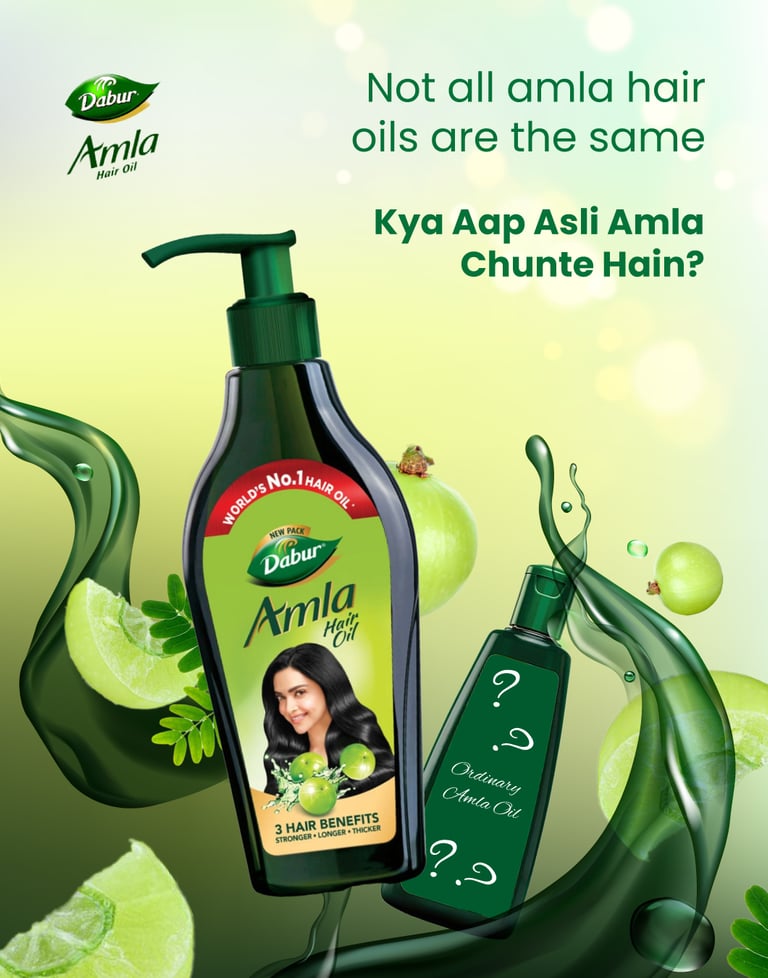

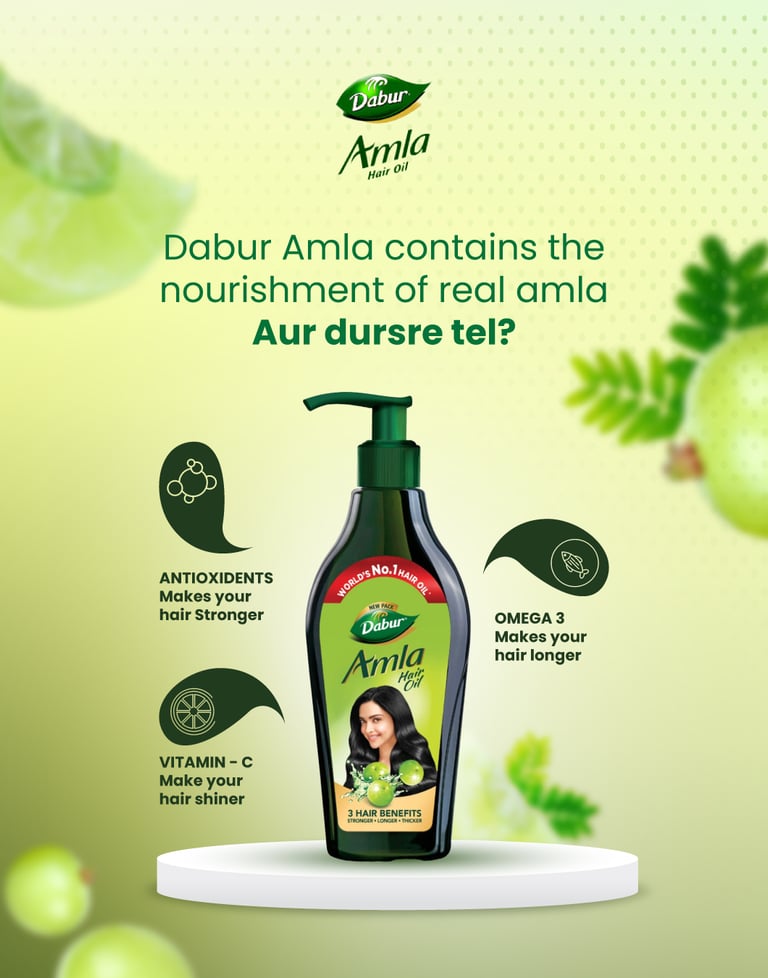




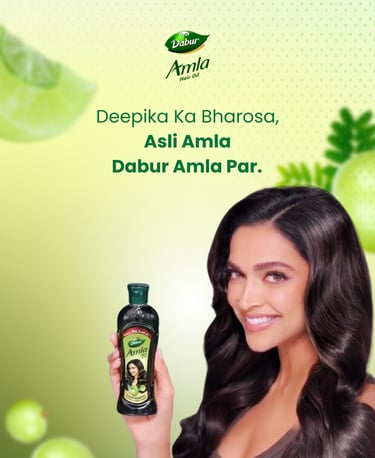




The advertising strategy:
Focuses on quality and heritage rather than directly addressing price. Uses the wordplay "Value" (price) vs "Values" to subtly counter Nihar's price focus. Emphasizes the authentic formula to suggest trustworthiness. Avoids any disparaging claims about competitors
Showcases the traditional Dabur Amla bottle alongside quality messaging
This approach maintains Dabur's premium positioning while acknowledging the competition in a dignified manner that steers clear of legal issues.
This is the “market leader” way of tackling the problem.
WHY IT WORKS BETTER?
Legal & ethical compliance
Stronger emotional connection
More inclusive & aspirational appeal
Higher engagement & virality
Boosts brand trust & sales
Dabur Amla can turn this PR challenge into a strength by pivoting towards positive, benefit driven messaging that resonates with both loyal customers and younger generations.
Key Performance indicators.
Brand Perception Shift
We will track sentiment analysis on social media (positive / negative / neutral mentions).
Brand Credibility & Trust
We will observe and highlight consumers sharing testimonials and stories about Dabur’s authenticity.
Engagement & Reach
We track hashtag performance (#RealAmlaStrength, #ValuesNotJustValue), likes shares and comments on our redesigned roll-out.
Consumer Behavior and Sales Impact
We will gauge shifts in buying motives through post-purchase surveys assessing if quality trust outweighed price sensitivity

